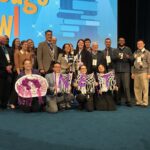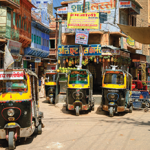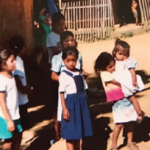Editor’s Note: Dr. Le was born in Vietnam and spent her childhood there, but she and her family left the country in the aftermath of the Vietnam War. They eventually settled in the United States, where Dr. Le attended college and medical school. Over 30 years later, she returned to Vietnam as a volunteer with the nonprofit organization Project Vietnam (PV), which provides medical care and training to the people of Vietnam. What follows are some of her reflections on her experiences there.
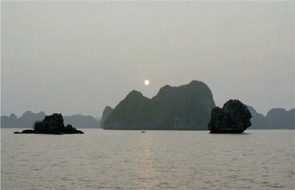
November 2004
My first trip to Vietnam was in November of 2004. I went along to observe, to dive into a culture that I thought I knew, yet was now so foreign to me. One hundred fifty volunteers departed from various cities in the United States, Canada, Australia, and France, converging in Ho-Chi-Minh City on the same day. There were physicians, nurses, respiratory therapists, emergency medical technicians (EMTs), engineers, and volunteers from all walks of life.
We were organized into three teams. The medical team went to three remote northern hospitals to deliver medical care to approximately 2,300 individuals, from children to elderly. The surgical team traveled to Lang-Son (a remote, rural town in northern Vietnam, close to the China border) and operated on 85 children with cleft lips and cleft palates. The training team was dispatched to the Saigon School of Medicine, the teaching hospital Cho-Ray, Khanh-Hoa (Nha-Trang) hospital, the pediatric hospitals in the South, then Bach Mai hospital in Hanoi, as well as the surgical hospital Viet-Duc, the national institute of Pediatrics in the North, and Thanh-Hoa general hospital. I was assigned to the training team. The first year, I had no duty; I just observed.
After the first day in Saigon, I met members of the training team returning to the hotel with long faces, mumbling unintelligible expressions of frustration. They spent a whole day at a teaching hospital walking around, twiddling their thumbs, waiting for an audience! Cell phone calls flew back and forth between the doctors and the leader of the training team. What happened? No one knew, except that the volunteers of Project Vietnam spoke perfect English, but had very little to no fluency in Vietnamese, and the Vietnamese counterparts spoke beautiful Vietnamese and little English.
Both sides had mutual admiration, yet met with invisible barriers—linguistic, historical, and psychological. A few phone calls from the leader of the training team, then the doctors went back to the teaching hospital the next day. The hospital officials recruited Vietnamese doctors and residents from different specialties interested in emergency medicine and trauma care to attend the conference. The sessions were designed on the fly, depending on needs and interests voiced by the audience. There was no provision for a medical translator. Amid the polite brouhaha, I stepped in to mediate and became the medical translator by default. My colloquial Vietnamese was fluent, but I have a meager understanding of the medical terminology in Vietnamese and did my best with the help of several Vietnamese doctors. I learned that the Vietnamese doctors are excellent, astute clinicians, with a tremendous amount of trauma experiences and management. The technical limitations they encounter on a daily basis and the thirst for access to updated world medical literature forced them to become creative, inquisitive, and industrious.
The same question from Vietnamese doctors kept surfacing: “Will you come back next year?” It hit me like cold water, as meaning, “Can we trust you? Will you truly bring a meaningful program to propel us to international medical standards? Or is this another one of these hundreds of short visits by medical doctors from all over the world who had a curiosity about our country, but who left behind a few pieces of equipment without training, maintenance, and sustenance?”

My mind focused on the complexity, meaning, and implications of that simple question. It meant more than understanding, it meant coming to see the way people live, think, and behave in this land. It meant to feel their hearts and minds, to live through them, and to know the history, the generations of men and women who brought forth today’s Vietnamese people—the fisherman who looks at a sunset in the Mekong Delta and says: “I love these waters”; the street vendor, under the weight of her bamboo baskets, who walks to the market in Hue and stops at the Old Citadel and sheds a tear.
I spent several days floating on the waters of Halong bay, meandering among majestic ghostly limestone mountains rising straight out of the seas, thinking of these relationships. Life is not about acquiring more but about the depth of relationships. The Vietnamese doctors are willing to trust and to establish long-term relationships, but are we? Standing still through thousands of years of Vietnamese history, the Halong Bay mountains were witnesses to my thoughts.
My experiences during that first year could be summarized as a legacy of touching the unknown. From hospitals in Saigon to Hanoi and to Thanh-Hoa, I had a permeating heavy feeling of the well-meaning mission team’s unawareness of their imposition upon their hosts. As we labeled ourselves “going on medical mission,” we seem to think that we possess superior assets in terms of knowledge, technical skills, and diagnostic and managerial rationale. Many medical professionals would arm themselves with their western training, books, literature, and experiences, and would think of imparting their knowledge, within a two-week period, as proof of their invaluable gift. Yet, why were they met with resistance, distance, and polite disappearance from the Vietnamese counterparts?
Toward the end of our two-week tour in Vietnam, I let out a big sigh of relief at the thought of going home to America. For me, the beauty of a white winter in silence and solitude was a welcome respite for reflection and to let formed thoughts and sensations come to mind. The leader of PV did not waste any time; three months later we were discussing the next trip in November 2005. I made the commitment to go back to Vietnam, this time leading a training team of twenty physicians, nurses, engineers, and volunteers to Can-Tho, Hanoi, and Hai-Phong.
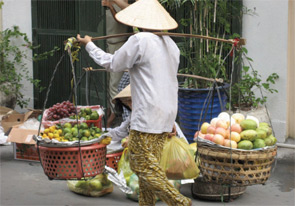
November 2005
I often wonder why I did not hesitate to return to Vietnam after a disastrous first experience. My body and mind were just recuperating from the assailing insults, yet I felt like I had just walked to the edge of a cliff, and at that moment I felt alive. Quite often, I realized, outer storm mirrors inner tempest, a window into one’s inner being. Curious, I found myself asking team members the same question: “Why are you going to Vietnam for medical mission?”
Vietnamese-American expatriates traveled with PV in different capacities, as physicians in all subspecialties, pharmacists, dentists, therapists, engineers, and volunteers of various backgrounds. There is a pervading feeling of coming home, of reaching out to Vietnamese people. Many of us planned this annual trek with feverish anticipation, took vacation time from our regular jobs, saved money to pay for airline tickets, the land-based operation, lodging, and meals, in addition to medications, surgical supplies, and medical materials such as books, CD-ROMs, and prepared lectures.
A few kept returning to Vietnam despite unrelenting frustration, anger, misunderstanding, occasional poor lodging, missed trains, flights, and last-minute training-program cancellations or teams reassignments. There were numerous other medical specialists who went with PV, but left the team halfway through the two-week duration or were so shocked by the poverty that they left poorer than before the PV encounter.
In November 2005, I led the training team to Can-Tho, the largest city in the Mekong Delta. We planned to teach emergency medicine and trauma care at Can-Tho General Hospital and Can-Tho Children’s Hospital. Lectures were sent ahead to the Saigon School of Medicine to be translated into Vietnamese. Two volunteers succeeded in planning a decent schedule. However, I never had pre-trip contact with any of the Vietnamese counterparts in Can-Tho. As the bus carrying twenty of us neared Can-Tho, I called our contact on my cell phone to announce our arrival and to locate our hotel, only to find that there were two hotels of the same name, Ninh-Kieu, overlooking the Mekong River. I thought to myself, “Here we go again.”
The bustling life in the Delta rises and falls rhythmically with Mekong tides, alternatively raging and relaxing in chorus. Likewise, I spent my days interviewing and identifying team members’ strengths and weaknesses, coordinating with hospital officials for the two conferences conducted at the two hospitals simultaneously, delegating tasks of translation, of scouting for lodging and restaurants suitable for the team’s needs. Like an empty sack of rice, my body was washed from shore to shore, my mind stood still like a rudder to navigate through these rushing alluvial waters, and my emotions and sensations deposited like sediment in my mind to be processed later.
On the last day, before leaving Can-Tho, I asked one of our team members to coordinate a canoe trip to the floating market of Cai-Rang in the canals of the Mekong delta, where the local people live, raise chickens and ducks, and grow the famous longan trees and other tropical fruit trees—rambutan, durian, and water coconut. It was R and R for all of us, yet a chance to be with the farmer, the fisherman, the children, and the old Vietnamese women at their doorsteps.
Then we flew to Hanoi, the capital of Vietnam, and conducted the same conference at Bach-Mai Hospital. Standing in the clean and well-lit lobby of this more than 100-year-old hospital, it came to me that the walls of this building had weathered numerous political storms, witnessed countless changes with the social ups and downs of Vietnam, and saved numerous lives famous and unknown—this very hospital was bombed during US air raids in 1972. From the lessons learned from the South, our conference in the North improved. Again, I wore two hats: leader of the emergency medicine and trauma team and a rheumatologist interacting with the physicians of the rheumatology department. I felt deep gratitude towards the physicians and patients who taught me about so many rheumatologic diseases particular to the tropics: a tropical version of dermatomyositis, lupus, and parasitic-induced musculoskeletal diseases.
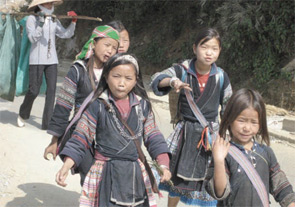
Lessons Learned 2006
Update on Infectious Diseases and Infection Control was the focus for our training team in 2006. With this adventure, an infectious-diseases doctor from California led the team and I coordinated the effort between American and Vietnamese physicians. With the advent of SARS, the avian flu, the stigmata of HIV in Asian cultures, and the resurgence of tuberculosis worldwide, I saw an urgency in dissemination of the latest medical facts to the Vietnamese healthcare professionals, and worked diligently with our team of infectious-diseases specialists in the United States and our Vietnamese counterparts for seven months before our departure to Vietnam. Drawing from heartaches and lessons learned from my two previous trips, I made personal contacts with physicians, hospital administrators, and tour operators. In addition, I looked into the finest details of our conference, including lecture content, format, and translation; conference schedules; extending a clear invitation to Vietnamese healthcare professionals; audio-visual equipment; and down time for our team.
The 2006 Infectious Diseases and Infection Control Conference in the South drew 230 physicians and scientists of great experience and caliber from Saigon, the southern provinces of Vietnam, including several southern-central provinces. In Hanoi, there were 220 physicians and scientists from the northern provinces. My goal for the project was to steer the conference toward benefits for the attendees, within acceptable limits of our team’s energy and time. Still, the attendees wanted more time for questions with our specialists.
Although my journey to Vietnam with the Infection Control training team is part of an ongoing process, every step, however heartbreaking it is, will lead to another step with lessons learned.
